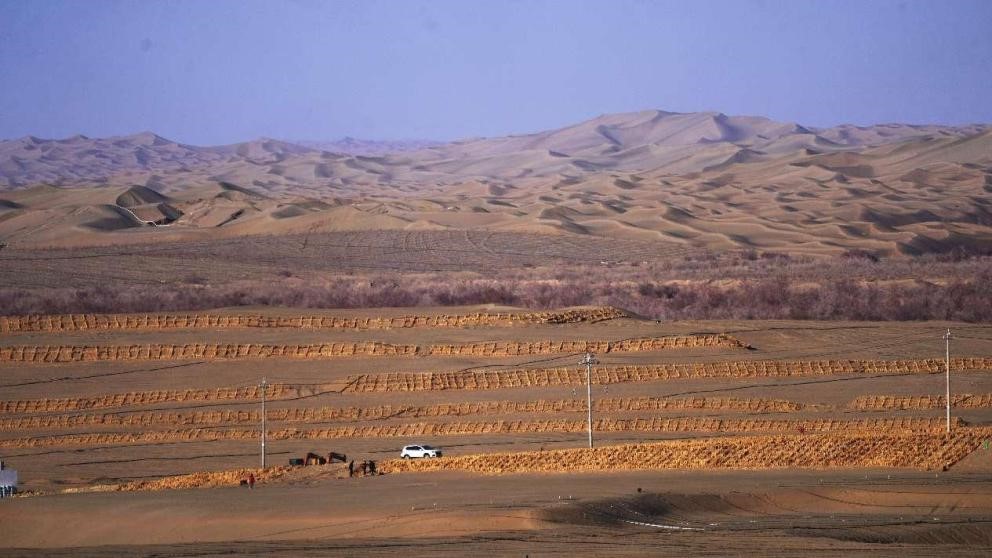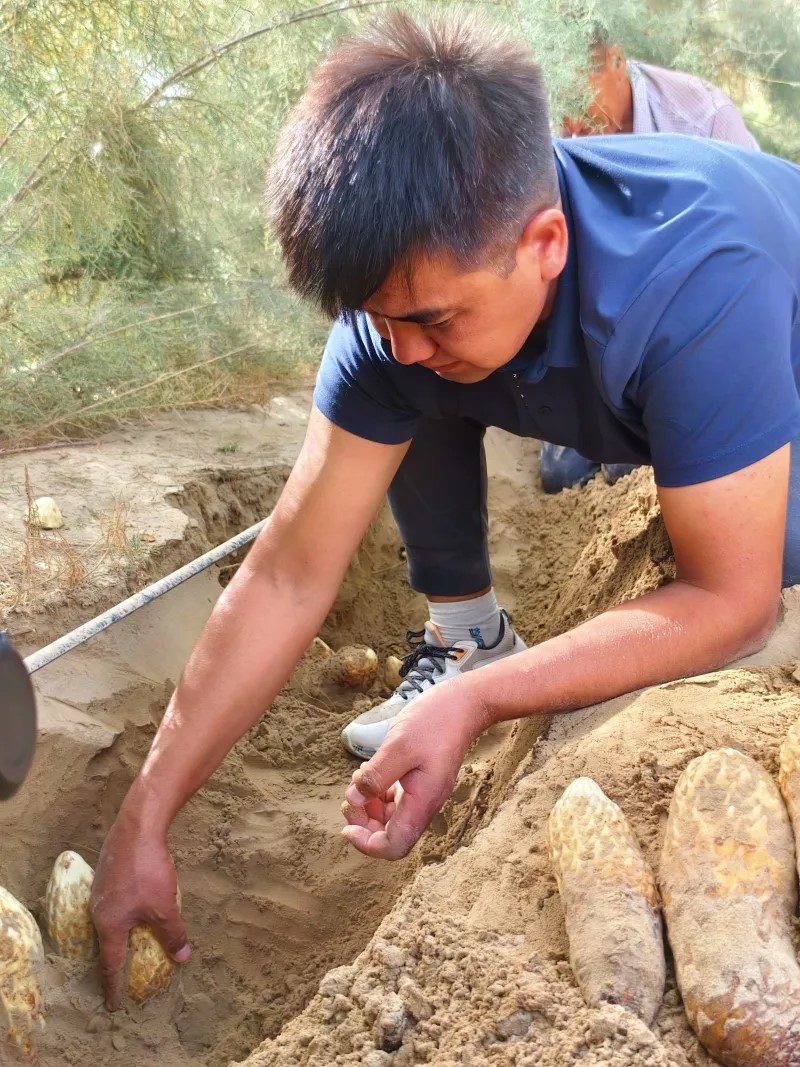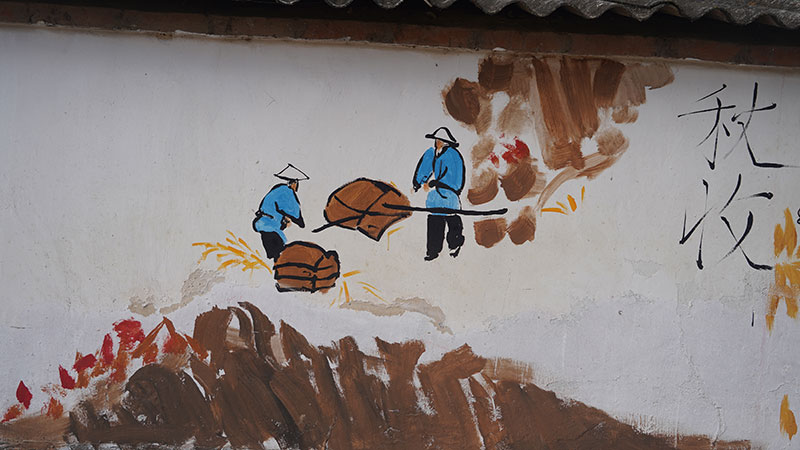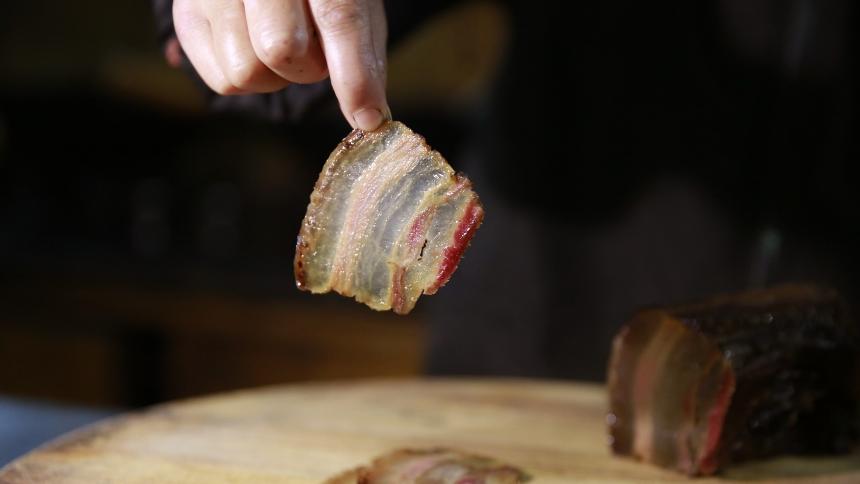China's largest desert fully encircled with green belt
The Taklimakan Desert, the largest desert in China, has been completely encircled by a green belt stretching 3,046 km on Nov. 28, according to the Xinjiang regional forestry and grassland bureau.
Covering 337,600 square km with a circumference of 3,046 km, the Taklimakan Desert lies between the Tianshan and the Kunlun mountains. It is the world's second-largest drifting desert, stretching about 1,000 km east to west and 400 km north to south.

Photo taken on Nov. 27 shows sand control workers shaking hands to celebrate the completion of the green belt in the Pishan section of the Taklimakan Desert. (Photo/Hu Lizheng)
It has taken more than 40 years to fully enclose the desert with a green belt. By the end of 2023, a 2,761-km-long green belt had been built, leaving only 285 km unfinished, which is also the most challenging section. Followed by arduous efforts, the final stretch was fully bridged on Nov. 28, creating a complete ecological shield around the desert.
Xinjiang's Hotan prefecture, located on the southern edge of the Taklimakan Desert, is surrounded by sand on three sides. It was the region most affected by sandstorms in southern Xinjiang, and thereby faced the biggest challenge in sand control.
After taking a range of targeted measures such as making grass grids, the sandstorm-prone area has managed to contain the desert's expansion. The expansive grass grids now resemble vast nets that anchor the shifting dunes. Up close, desert shrubs such as saxaul and tamarisk sway gently in the wind, thriving within the grids.
According to Wang Zhenxi, an official with the Xinjiang regional forestry and grassland bureau, the shifting dunes in the Taklimakan Desert covers about 258,400 square km, with wind speeds often exceeding level 8. The desert receives less than 80 millimeters of rainfall annually.

Photo shows sand control barriers in Yutian county, Hotan prefecture, northwest China's Xinjiang Uygur autonomous region. (People's Daily Online/Wang Zhiqing)
Thanks to more than four decades of efforts as part of China's Three-North Shelterbelt Forest Program, the world's largest afforestation program to tackle desertification, Xinjiang has made great achievements in sand control.
Its forest coverage rate has increased to 5.06 percent from only 1.03 percent in 1978. The area of artificial oases has grown from 65,000 square km to 100,000 square km over the past 30 years, an increase of about 54 percent.
According to China's sixth national survey of desertification and land degradation conducted in 2022, the desertified and sandy land areas in Xinjiang decreased by 1,956 square km and 242.82 square km respectively.
However, the remaining sandy land poses even greater challenges due to severe desertification and poorer soil conditions. To tackle these arduous challenges, Xinjiang has introduced a comprehensive plan to fortify the edges of the Taklimakan Desert. The plan covers a total treatment area of 32.658 million mu (about 2.18 million hectares) with an estimated investment of 12.355 billion yuan ($1.7 billion) and is set to continue until 2030.
"We will take steps including afforestation, grass planting, and engineering measures to fix sand so that we can lock the desert's edges, and build protective forest and grass belts to contain the desert's expansion. We have also launched targeted projects in sandstorm source areas to mitigate the impact of wind and sand," Wang explained.

Growers harvest cistanche deserticola, commonly known as desert-broomrape, in Yutian county, Hotan prefecture, northwest China's Xinjiang Uygur autonomous region. (Photo/Hu Lizheng)
"Within oases, we will bridge the gaps in shelterbelts and address blank spots in desertification control. The ultimate goal is to achieve 'wind prevention, sand blockage, and dust control,' so as to improve the overall ecological environment," Wang said.
By fostering the entire industrial chain and seeking diversified approaches to development, Xinjiang has achieved the integrated development of desert ecology and sand industry.
In Hotan prefecture, Yutian county has established a complete industrial chain for cistanche deserticola, commonly known as desert-broomrape, and an industrial park for desert rose, boosting income for farmers. In Cele county, red dates are cultivated according to local conditions, with lush orchards forming green barriers that shield villages from encroaching sand.
Statistics show that Xinjiang now boasts 1.845 million mu of specialized commercial crops in desert areas, with the sand sector's annual output value reaching 4.37 billion yuan.
With the successful completion of the green barrier, this region, once plagued by harsh sandstorms, is set to embrace renewed vitality and flourishing ecosystems.
Photos
Related Stories
- China's Xinjiang makes new breakthrough in grain output
- Xinjiang firms fight back U.S. sanctions to protect local jobs
- New air route links China's Xinjiang, Belarus' Minsk
- Sand dunes turned to winter wonderland after snow in Xinjiang
- Trending in China | Discovering the vivid Meshrep: Xinjiang's cultural jewel
Copyright © 2024 People's Daily Online. All Rights Reserved.









